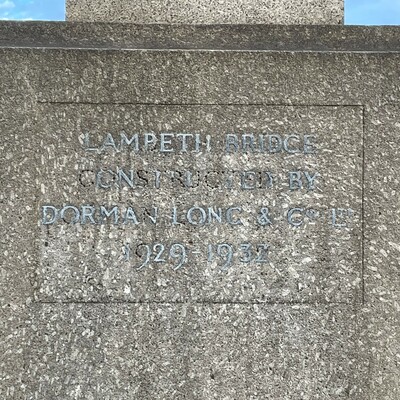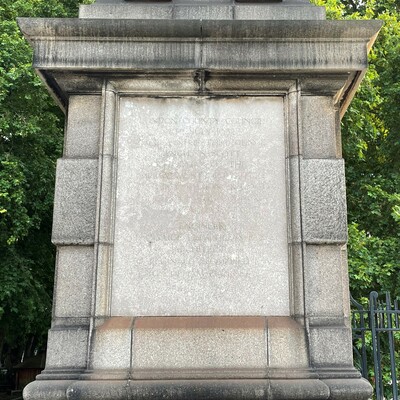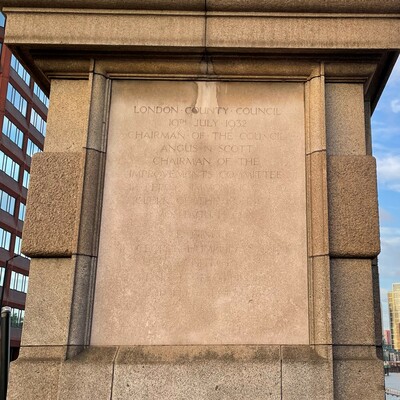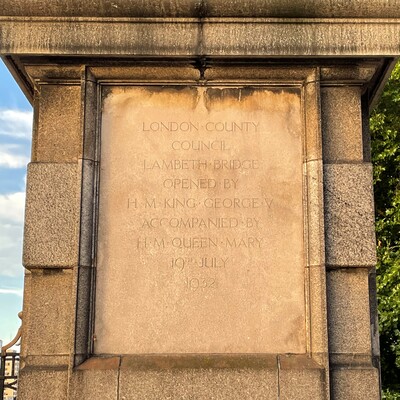Before any bridge there was a horse ferry here, hence the name of the western approach road. Know Your London describes how this ferry probably worked - they even have a painting. It was for conveying horses and carriages across the river and it was only possible to control such a heavy vessel under certain tidal conditions so people would sometimes have waited hours to cross. The ferry closed when Westminster Bridge was built nearby in 1750.
The first Lambeth Bridge, designed by Peter William Barlow, opened in November 1862. It was a suspension bridge with steep approaches which made it unpopular for carriages. The cables and girders started to degrade and in 1910 it was closed to vehicle traffic.
The new bridge was designed by engineer Sir George Humphreys and architects Sir Reginald Blomfield and G. Topham Forrest, and was built by Dorman Long. Completed and opened in 1932 by King George V and Queen Mary.
At both ends of the bridge is a pair of obelisks, all 4 topped with stone pinecones, ancient symbols of hospitality. Wikipedia informs: "there is a popular urban legend that they are pineapples, as a tribute to Lambeth resident John Tradescant the younger, who is said to have grown the first pineapple in Britain." And is buried in the former Church of St Mary-in-Lambeth on the eastern approach to the bridge.
See Londonist for 9 Fascinating Facts About Lambeth Bridge. And Thames.me has lots of images.
Other sources include: Vauxhall Society, Wikipedia, Listing.











Comments are provided by Facebook, please ensure you are signed in here to see them